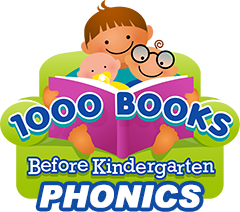Phonics instruction is helpful to any age child including older elementary school children (5th and 6th grade) who are still struggling to read.
In a peer reviewed action research study, researchers found that phonics is incredibly useful for improving reading skills even in older children who find reading difficult. Henry, E. (2020). A Systematic Multisensory Phonics Intervention for Older Struggling Readers: Action Research Study
Researchers found that a multisensory phonics program resulted in gains in word reading accuracy and demonstrated increased confidence in word reading skills in struggling readers in 5th and 6th grade.
Research has predominantly focused on phonics interventions for early reading instruction, but many students face reading difficulties beyond early elementary grades. Jeffes’ (2016) study with older struggling readers examined the viability of implementing a phonics intervention in an upper school setting. Quantitative data from the study showed phonics and word recognition gains, which provides evidence that phonics instruction is effective in older students. Jeffes’ study highlights the paradox of interventions for students in upper elementary grades and beyond: Do the benefits of the intervention outweigh the scheduling and curriculum priorities of the classroom setting? Without sufficient reading skills taught through an intervention, can students access the classroom curriculum?
Amazingly in just the eight weeks the study was conducted, 15 out of the 19 students made word reading gains. The research yielded several interesting findings. Although one-on-one reading instruction is the optimal teaching method, using small groups of up to three students (but no more than three students) worked very well during the study. The researchers learned, “that four in a group was simply too big because there was too much time between their reading as we went around the group…” Overall, the multisensory phonics approach (writing word patterns, sorting word cards, reading word cards) worked well for the students.
For the vast majority of students, the multisensory phonics intervention that used visual memory cues, grapheme–to–phoneme correspondences, tactile manipulation and decoding/encoding practice was effective. Many of my students looked forward to the word work and were receptive to corrective cues so they had multiple opportunities to imprint accurate reading and spelling.
Id.
To help readers of any age, including older struggling readers in 5th and 6th grades, the 1000 Books Before Kindergarten Phonics Course is an excellent multisensory phonics program.

